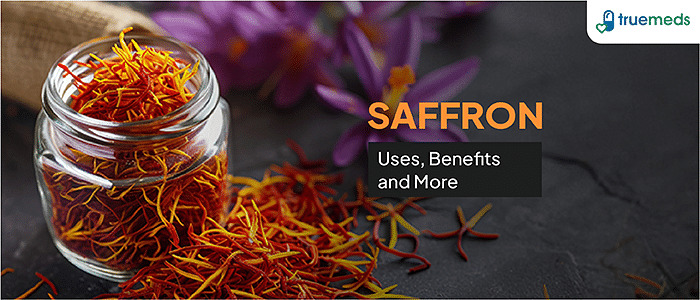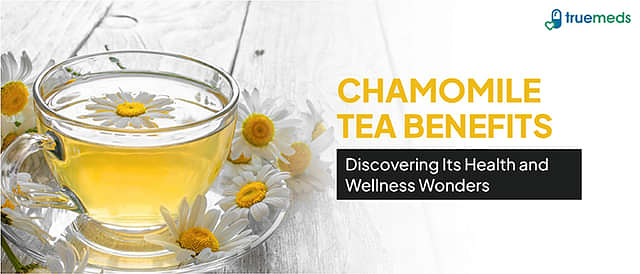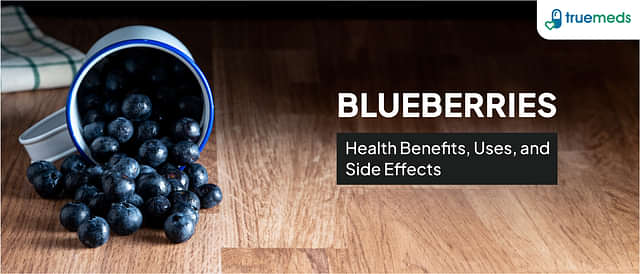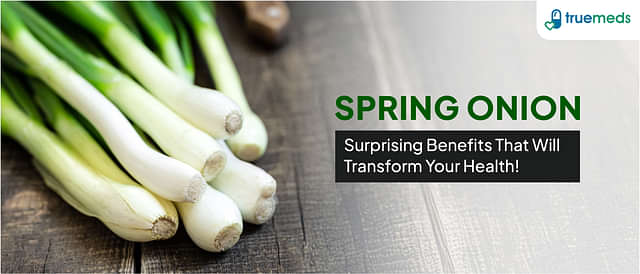Saffron (Kesar): Uses, Benefits and More
Last updated on : 09 Nov, 2025
Read time : 11 min
Saffron is a spice that is significant in our kitchens, culture, and traditional medicine. Saffron, derived from the flower Crocus sativus, is renowned as the world’s most expensive spice. It is cherished for its vivid crimson stigmas and is used for seasoning and colouring in various cuisines worldwide.
Saffron has a long history, cultivated for over 4,000 years in the Mediterranean and the Middle East. The Akkadian Empire used saffron around 2300 BC. It remains essential in cultural practices from ancient Egypt to today’s culinary arts.
Saffron is a beloved spice in various cuisines, from Spanish paella and Italian risotto to Indian biryani. Its unique flavour and vibrant colour make it a common ingredient in many dishes, enhancing taste and visual appeal. Beyond cooking, saffron is valued in Ayurvedic practices for its potential health benefits, including its calming and antioxidant effects. This versatile role in food and medicine highlights saffron’s significance throughout human history and culture.
What is Saffron (Kesar)?
Commonly referred to as ‘Kesar’ in India, saffron is derived from the stigmas of the Crocus sativus flower. The spice is characterised by its strong aroma and distinct flavour, attributes from its chemical compounds, primarily picrocrocin and safranal. These compounds also contribute to its vibrant yellow colour through the carotenoid pigment crocin.
The cultivation of saffron is a labour-intensive process, requiring the hand-harvesting of stigmas from thousands of flowers. This meticulous process, combined with the specific climatic conditions needed for growth, contributes to saffron’s high market value. Lets delve into the main potential health benefits and safe usage of saffron.
Types of Saffron
There are several varieties of saffron, generally classified based on the length of the red stigma and the presence of the yellow style. Understanding these distinctions primarily helps in assessing market quality and price:
- Super Negin: Represents the highest grade, characterized by long, thick, and purely red threads with minimal to no yellow style. It has the highest colouring strength.
- Negin: A high-quality grade, still primarily red, but with slightly shorter threads than Super Negin.
- Sargol: Consists purely of red, broken stigmas, sometimes referred to as ‘top of the flower’. It possesses a strong aroma and colouring property.
- Kashmiri Saffron: Highly regarded globally for its unique deep red colour, extremely long strands, and potent aroma, often considered a premium variety.
Nutritional Value of Saffron
While saffron is used in small quantities, it offers a notable concentration of micronutrients and bioactive compounds. Here’s a breakdown of saffron’s nutrients per 100 grams:
|
Nutrient |
Amount per 100 gm |
| Calories | 310 kcal |
| Protein | 11.4 g |
| Carbohydrates | 65.4 g |
| Dietary Fiber | 3.9 g |
| Fat | 5.85 g |
| Vitamin C | 80.8 mg |
| Calcium | 111 mg |
| Iron | 11.1 mg |
| Magnesium | 264 mg |
| Potassium | 1,720 mg |
Saffron contains antioxidants, essential vitamins, and minerals, contributing to overall health. Incorporating this spice into your diet can offer various health advantages, but it should be used judiciously due to its potency and cost.
Saffron Uses
Saffron is versatile, offering a variety of uses across culinary, medicinal, and cosmetic applications:
1. Culinary Uses
Saffron is a prized ingredient in many global cuisines. From Spanish paella to Indian biryani and Italian risotto, saffron elevates dishes with its rich flavor and vibrant color.
2. Traditional Medicinal Uses
Historically, saffron has been used in Ayurvedic and traditional Persian medicine for its anti-inflammatory, antispasmodic, and sedative properties.
3. Cosmetic Uses
Saffron is increasingly popular in skincare for its potential antioxidant and skin-brightening properties. It is often used in face masks and creams to enhance complexion and potentially reduce signs of aging.
Potential Health Benefits of Saffron
Saffron’s potential benefits are largely attributed to its active compounds, primarily crocin, crocetin, and safranal. It is important to note that while research is promising, saffron should not replace prescribed medication [1].
1. Antioxidant and Anti-inflammatory Properties
Saffron contains potent carotenoids, particularly crocin and crocetin. These compounds function as strong antioxidants that help neutralize free radicals and reduce oxidative stress [1]. This protective effect is associated with reducing the risk of various chronic conditions, including cardiovascular disease [2].
2. Potential for Mood Enhancement and Mental Health Support
Saffron has been studied for its potential to improve mood and alleviate symptoms of depression. Multiple clinical trials suggest that saffron extracts (typically 30 mg per day) may be as effective as some standard antidepressant medications in treating mild to moderate depression [3].
Mechanism: Saffron is believed to influence neurotransmitters like serotonin, dopamine, and norepinephrine, which play key roles in regulating mood [3].
3. Neuroprotective Potential
Recent studies suggest that saffron’s bioactive compounds may support brain health and potentially protect against neurodegenerative diseases like Alzheimer’s and Parkinson’s [2].
- In Alzheimer’s Disease: Research suggests that saffron extracts may help improve cognitive function and slow the disease progression, potentially by reducing the buildup of amyloid plaques and acting as an anti-inflammatory agent [2].
- In Parkinson’s Disease: Preclinical studies suggest saffron’s active compounds may protect dopaminergic neurons, which could support motor function and cognition [2].
4. Cardiovascular Health
Saffron has been shown to have beneficial effects on heart health by improving blood flow and reducing inflammation [2].
- Lipid Management: Saffron may play a role in managing cholesterol and triglyceride levels [2].
- Blood Pressure: Preliminary research indicates saffron may help lower blood pressure by improving vascular function [2].
5. Ocular Health Support
Saffron’s antioxidant properties may help maintain retinal health, potentially reducing the risk of age-related macular degeneration (AMD) and diabetic retinopathy [2]. Studies suggest saffron supplementation could improve vision and protect against oxidative damage to the retina.
6, Support for Menstrual Health
Saffron has been traditionally used to support female reproductive health, particularly for its ability to alleviate symptoms of Premenstrual Syndrome (PMS) [2].
- PMS Relief: Clinical studies have shown that saffron may help reduce mood swings, irritability, and physical discomfort associated with PMS, particularly when taken daily during the menstrual cycle [2].
- Menstrual Cramps: Research has shown saffron to be effective in reducing the severity of menstrual cramps.
Side Effects and Precautions
While saffron is generally safe for most people when consumed in typical culinary amounts, it is a potent substance, and significant precautions must be observed, especially at medicinal doses:
1. Allergic Reactions
Some individuals may experience allergic reactions to saffron, including skin rashes, itching, or swelling. People with allergies to plants in the Lolium (ryegrass), Olea (olive), or Salsola families should exercise caution.
2. Risk of Toxicity (Overdose)
Excessive consumption of saffron is toxic and must be strictly avoided. The typical therapeutic dose for health benefits is around 30 mg per day.
- Dosage Context: Doses above 5 grams (5,000 mg) can lead to severe, life-threatening side effects such as nausea, vomiting, diarrhoea, blood in the urine, and vertigo.
- Pregnancy Warning: Crucially, high doses of saffron (above culinary amounts) can cause uterine contractions and must be avoided during pregnancy.
3. Potential Drug Interactions
Consult a healthcare provider before using saffron if you are taking any of the following medications:
- Blood Pressure Medications: Saffron may lower blood pressure. Taking it with antihypertensive medications could lead to dangerously low blood pressure (hypotension).
- Diabetes Medications: Saffron may lower blood sugar levels, increasing the risk of excessively low blood sugar (hypoglycemia) when taken alongside diabetes medications.
- Sedative Medications: Saffron can enhance the effects of sedative drugs, potentially causing excessive drowsiness or sleepiness.
- Blood Thinners: Saffron may have mild blood-thinning properties and could increase the risk of bleeding when combined with anticoagulant or antiplatelet medications.
How to Safely Incorporate Saffron into Your Diet
Saffron can be easily incorporated into your daily routine, but it’s important to consume it in moderation to avoid potential side effects and maximize its flavour.
1. Saffron Milk (Kesar Doodh)
A traditional preparation involves soaking a few saffron threads in a small amount of warm milk or water for 10-15 minutes to allow the colour and flavour to release fully. This can then be added to a full cup of warm milk.
2. Cooking with Saffron
Add saffron to rice dishes, soups, stews, and even desserts like kheer. Always soak the saffron threads in warm water, milk, or a small amount of stock before adding them to your dishes to release their full flavour and colour.
3. Daily Intake for Benefits
For potential health benefits, a typical studied dose is approximately 30 mg per day. It is mandatory to consult with a qualified healthcare provider or clinical nutritionist before incorporating saffron into your diet for medicinal purposes, especially if you have pre-existing conditions or are on medication.
Conclusion
Saffron, or Crocus sativus, is more than just a culinary delight. It offers a range of potential health benefits, from supporting mental well-being to protecting heart and eye health, primarily due to its powerful antioxidant compounds. Saffron is a valuable addition to both your kitchen and wellness routine. However, it is essential to be mindful of the correct dosage and potential drug interactions. Always seek guidance from a qualified healthcare professional before using saffron in therapeutic amounts, particularly if you are pregnant, breastfeeding, or managing a chronic health condition.
Frequently Asked Questions (FAQs)
What happens if we eat saffron every day?
Daily consumption of saffron in small culinary amounts is generally safe and may offer benefits such as potential mood elevation and antioxidant protection. However, excessive intake (above 5 grams) can be toxic.
What is saffron most commonly used for?
Saffron is most commonly used as a highly valued spice to enhance cuisines with its unique flavour and vibrant colour. It is also utilized in traditional medicine for its potential medicinal properties, particularly for mood and cognitive support.
How many types of saffron are there?
While saffron is categorized into quality types (e.g., Super Negin, Sargol), the three most commonly known geographic varieties are Iranian, Spanish, and Kashmiri, each with distinct characteristics in aroma, colour, and taste.
What kind of saffron is the best?
Kashmiri saffron is often considered among the best due to its superior colour, aroma, and long thread length. However, the ‘best’ type ultimately depends on the individual’s culinary or medicinal preferences and budget.
What is the most expensive type of saffron?
Saffron is the most expensive spice by weight globally. High-grade Kashmiri saffron and certain Iranian Negin types are typically considered the most expensive due to their quality, low yield, and labour-intensive harvesting.
What is the difference between Persian and Spanish saffron?
Persian (Iranian) saffron is generally known for a deeper red colour, a more potent flavour, and a stronger aroma. Spanish saffron is often milder, with a lighter colour and a more subtle flavour profile.
Can Saffron (Kesar) be taken daily along with milk?
Yes, saffron (Kesar) can be taken daily with milk in small amounts. This combination is common in traditional remedies and is believed to offer health benefits such as improving mood and digestion.
References
[1] Pandey, D. K., Nandy, S., Mukherjee, A., & Dey, A. (2020). Advances in bioactive compounds from Crocus sativus (saffron): Structure, bioactivity and biotechnology. In Bioactive Natural Products (pp. 273–304). Elsevier. https://www.researchgate.net/publication/342437631_Advances_in_Bioactive_Compounds_From_Crocus_sativus_Saffron_Structure_Bioactivity_And_Biotechnology
[2] Omidkhoda, S. F., & Hosseinzadeh, H. (2022). Saffron and its active ingredients against human disorders: A literature review on existing clinical evidence. Iranian Journal of Basic Medical Sciences, 25(8), 913–933. https://doi.org/10.22038/IJBMS.2022.63378.13985
[3] Siddiqui, M. J., Saleh, M. S. M., Basharuddin, S. N. B. B., Zamri, S. H. B., Mohd Najib, M. H. B., Che Ibrahim, M. Z. B., Binti Mohd Noor, N. A., Binti Mazha, H. N., Mohd Hassan, N., & Khatib, A. (2018). Saffron (Crocus sativus L.): As an Antidepressant. Journal of Pharmacy & Bioallied Sciences, 10(4), 173–180. https://doi.org/10.4103/JPBS.JPBS_83_18
Disclaimer
Our healthcare experts have carefully reviewed and compiled the information presented here to ensure accuracy and trustworthiness. It is important to note that this information serves as a general overview of the topic and is for informational purposes only. It is not intended to diagnose, prevent, or cure any health problem. This page does not establish a doctor-patient relationship, nor does it replace the advice or consultation of a registered medical practitioner. We recommend seeking guidance from your registered medical practitioner for any questions or concerns regarding your medical condition.
Popular Articles
Recommended Articles
Recent Articles
Company
About UsHealth ArticleHealth StoriesHealth LibraryDiseases & Health ConditionsAyurvedaUnderstanding Generic MedicinesAll MedicinesAll BrandsNeed HelpFAQSecuritySubscribe
Registered Office Address
Grievance Officer
Download Truemeds
Contact Us
Our customer representative team is available 7 days a week from 9 am - 9 pm.
v4.10.1
2025 - Truemeds | All rights reserved. Our content is for informational purposes only. See additional information.
Our Payment Partners














































